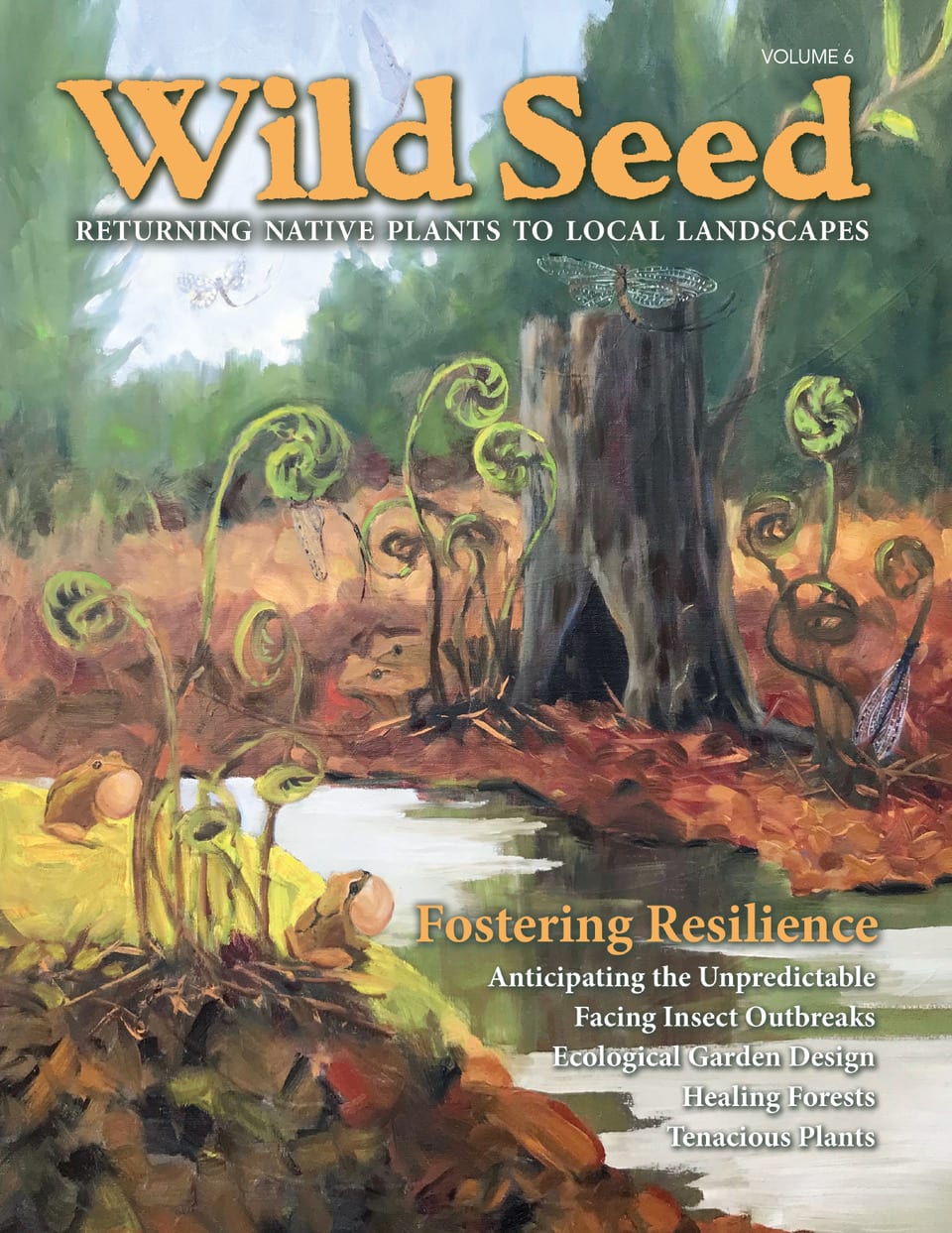 Wild Seed, Volume 6
Wild Seed, Volume 6
Published by Wild Seed Project (2020)
Reviewed by Curtis Jirsa
Wild Seed is an annual magazine published by Wild Seed Project, a Maine-based nonprofit that advocates for using more native plants in our landscapes. The thrust of Wild Seed has always been to communicate why native species are important and how to integrate them into our surroundings. Each issue combines informational articles with practical how-to pieces, augmented with beautiful full-color artwork and photographs. This year’s volume, like its predecessors, is a compelling and richly-illustrated collaboration between an impressive group of scholars, horticultural professionals, local artists, and other experts and enthusiasts.
This sixth volume, entitled “Fostering Resilience,” draws together fifteen articles that approach the question of resilience from various angles. Readers familiar with the native plant and horticultural worlds will recognize a number of the contributors and their institutions. Uli Lorimer, director of horticulture at the Native Plant Trust, sets the tone for the volume in his article “Nature as Muse and Teacher,” in which he concludes: “How we conceive of gardens must change. We need to consider what all the organisms there need and then ask ourselves, ‘How can my choices in the garden most benefit them?’”
Entomologist Doug Tallamy encourages a similarly holistic view of land management with a piece about managing insect outbreaks responsibly. Ginny Stibolt, the co-author of Climate-Wise Landscaping, contributes a chapter on the importance of native trees in urban environments. And, Andy Brand of the Coastal Maine Botanical Gardens recommends numerous hardy native plants for creating more climate-resilient landscapes.
These more practical articles on responsible stewardship are complemented by other pieces on climate change and ecology. One chapter, in particular, entitled “Losing Ground: Tracking Regional Declines in Native Wildflowers,” offers a striking case study about declining biodiversity throughout the northeastern United States. The authors, Richard B. Primack and Caitlin McDonough MacKenzie (of Boston University and the University of Maine, respectively), compare historical records of plant populations in 13 locations against modern surveys to calculate the percentage of species lost in each area. It’s an eye-opening study that drives home the importance of identifying and protecting local plant populations.
The remaining articles cover such topics as forest management, local restoration projects, starting a native plant nursery, and managing invasive meadow species with goats. The magazine’s editors, Marina Schauffler and Heather McCargo (who also serves as Wild Seed Project’s executive director) have kept the contributions diverse but thematically aligned.
Though Wild Seed Project is based in Maine, readers throughout the northeastern region and beyond will find something meaningful, useful, and galvanizing in this volume, which can be purchased on their website or obtained through an annual membership. Issues of Wild Seed always leave me better informed about native plants and inspired to take action; volume 6 is no exception.
You can view the table of contents and purchase the magazine here. Note that the magazine is free of advertising.
About the Reviewer
Curtis Jirsa, formerly a college English professor, now owns and operates Winterbloom Farm in midcoast Maine, where he grows medicinal herbs and starts native plants from regional seed.
***
Each author appearing herein retains original copyright. Right to reproduce or disseminate all material herein, including to Columbia University Library’s CAUSEWAY Project, is otherwise reserved by ELA. Please contact ELA for permission to reprint.
Mention of products is not intended to constitute endorsement. Opinions expressed in this newsletter article do not necessarily represent those of ELA’s directors, staff, or members.


